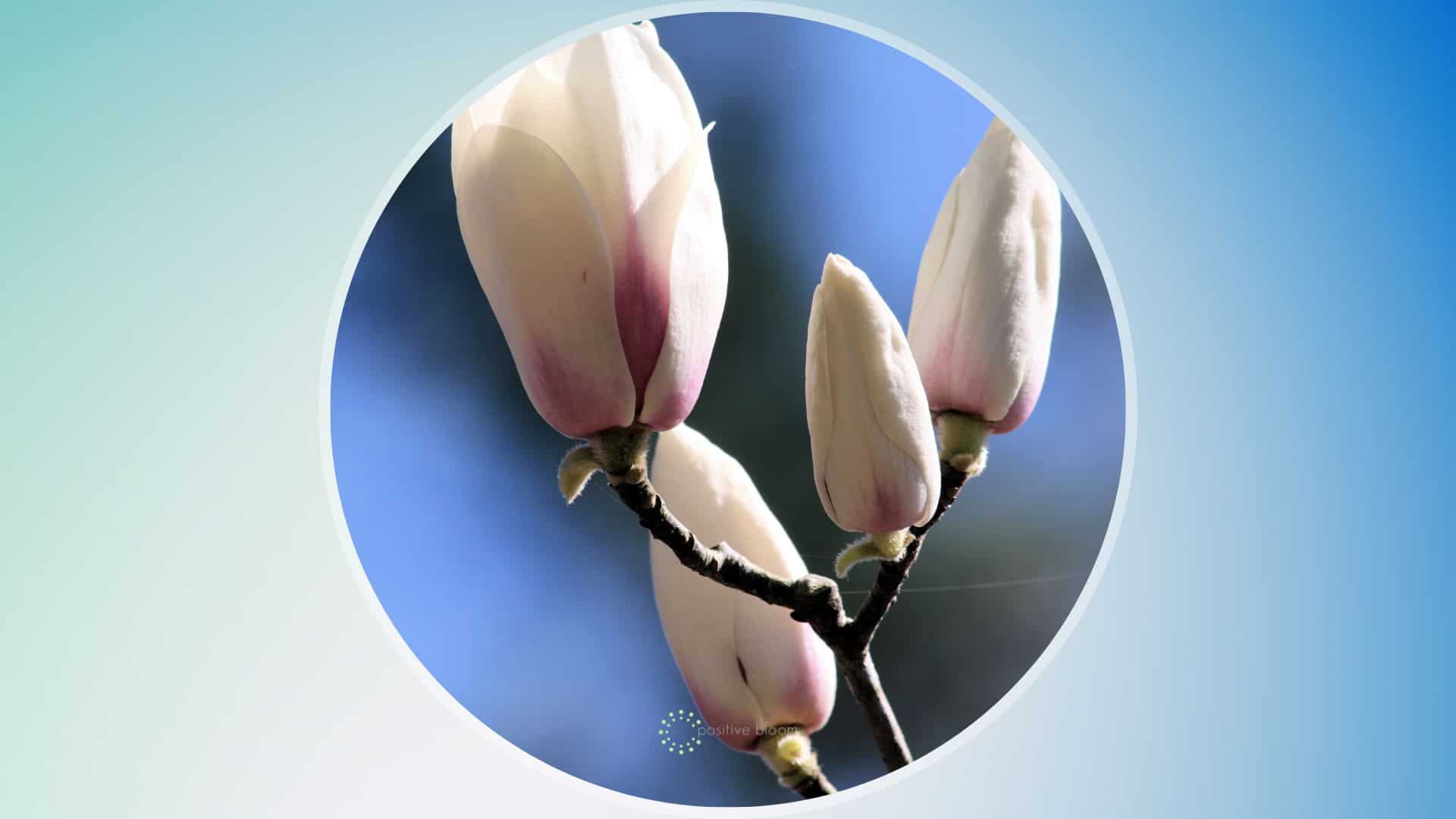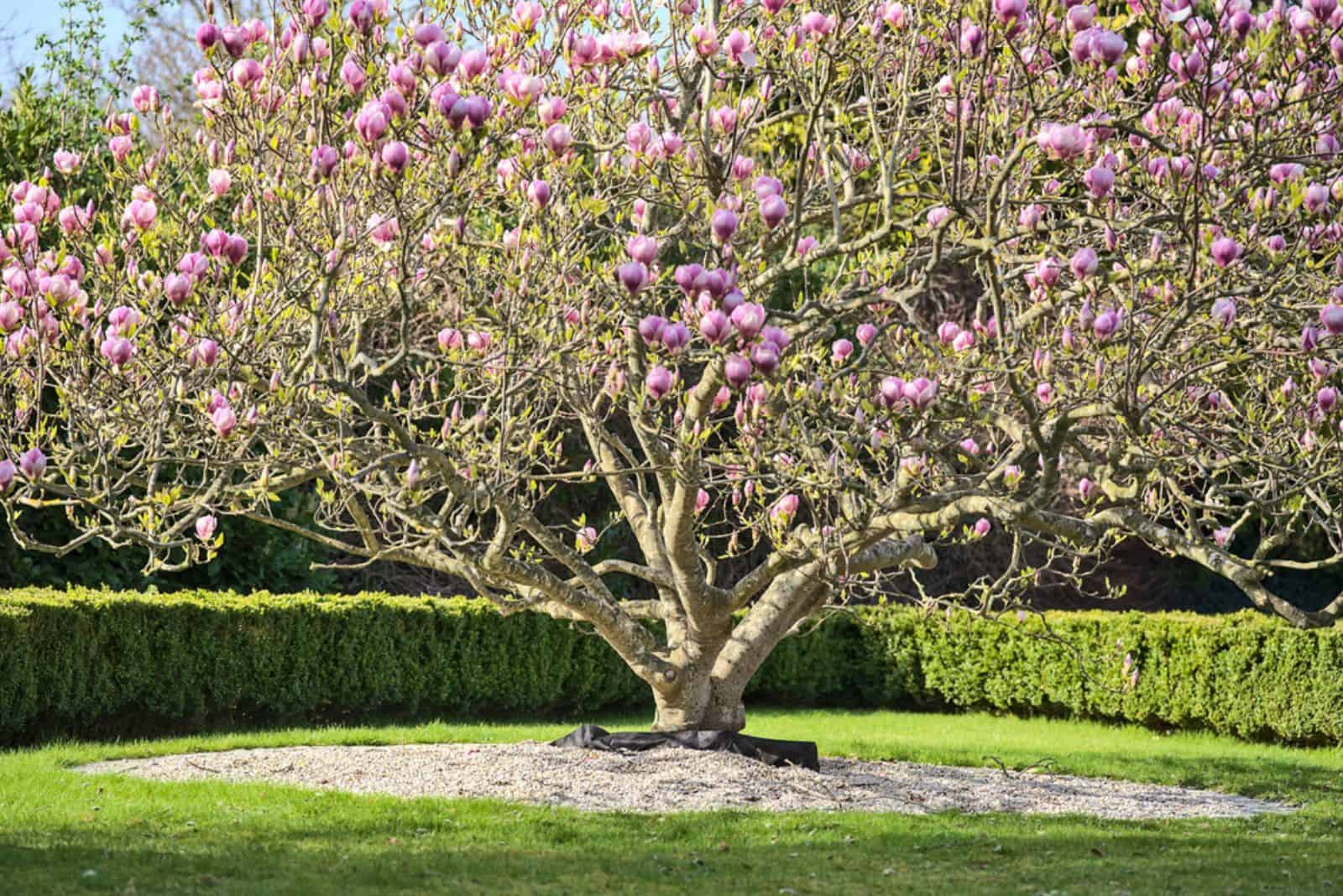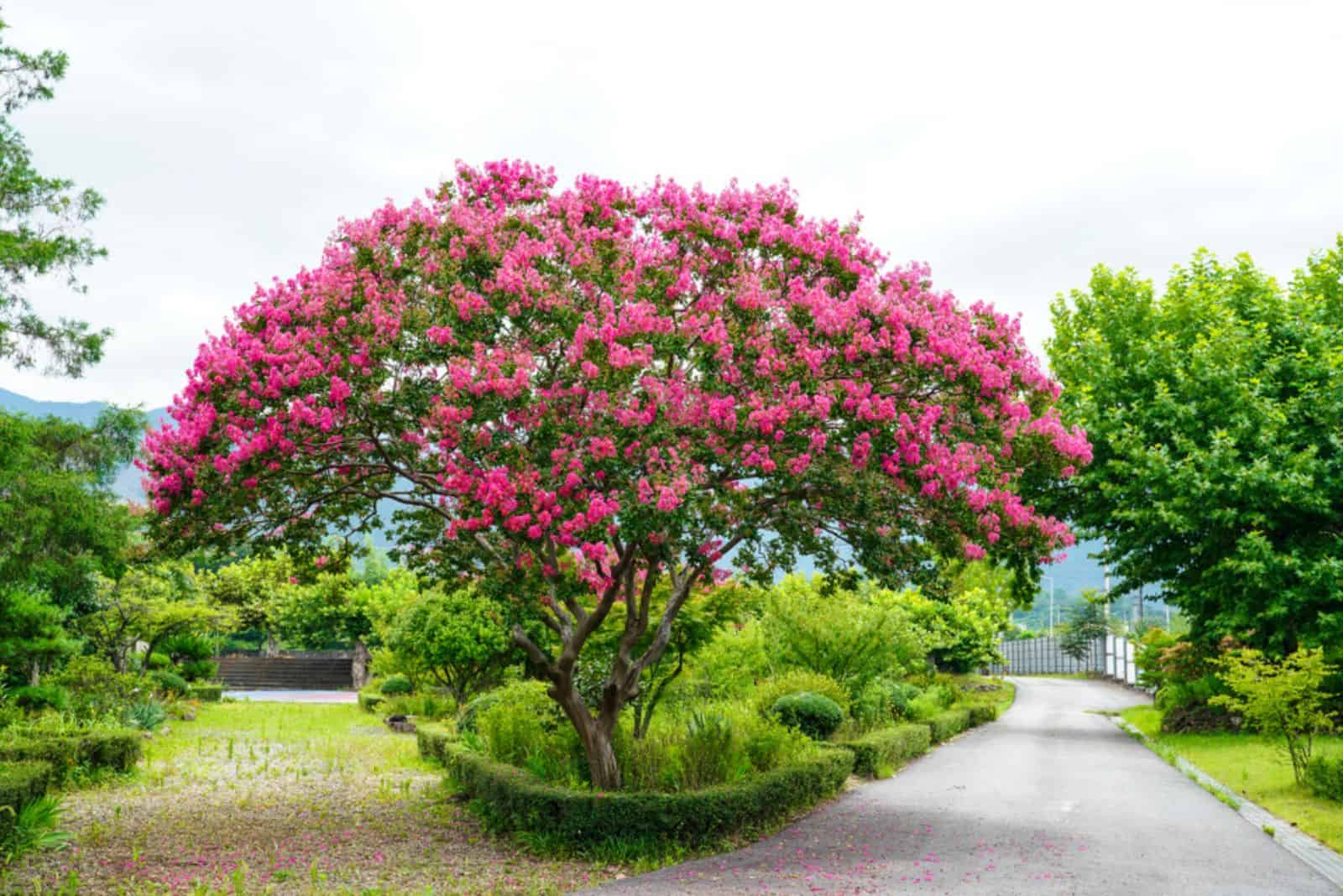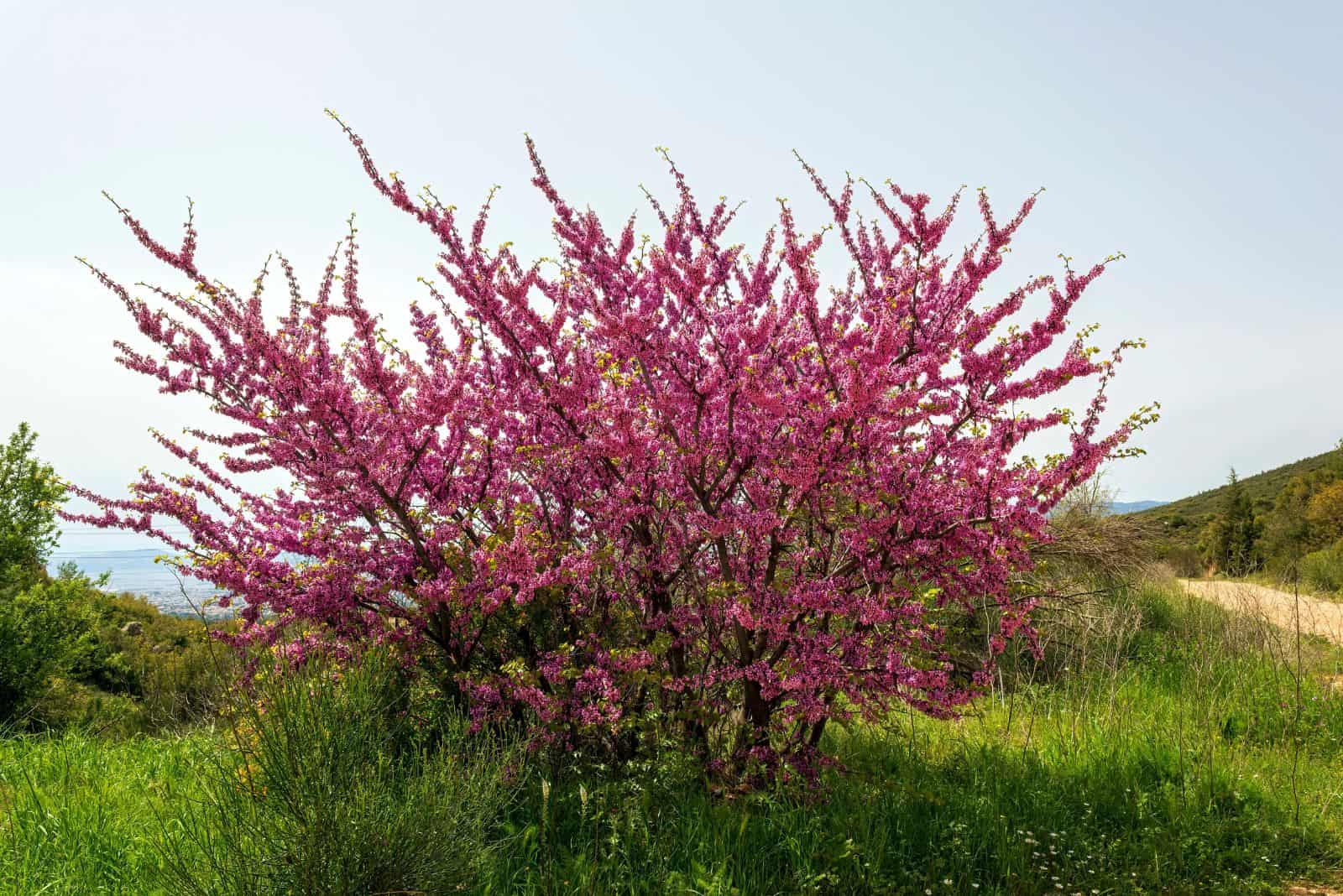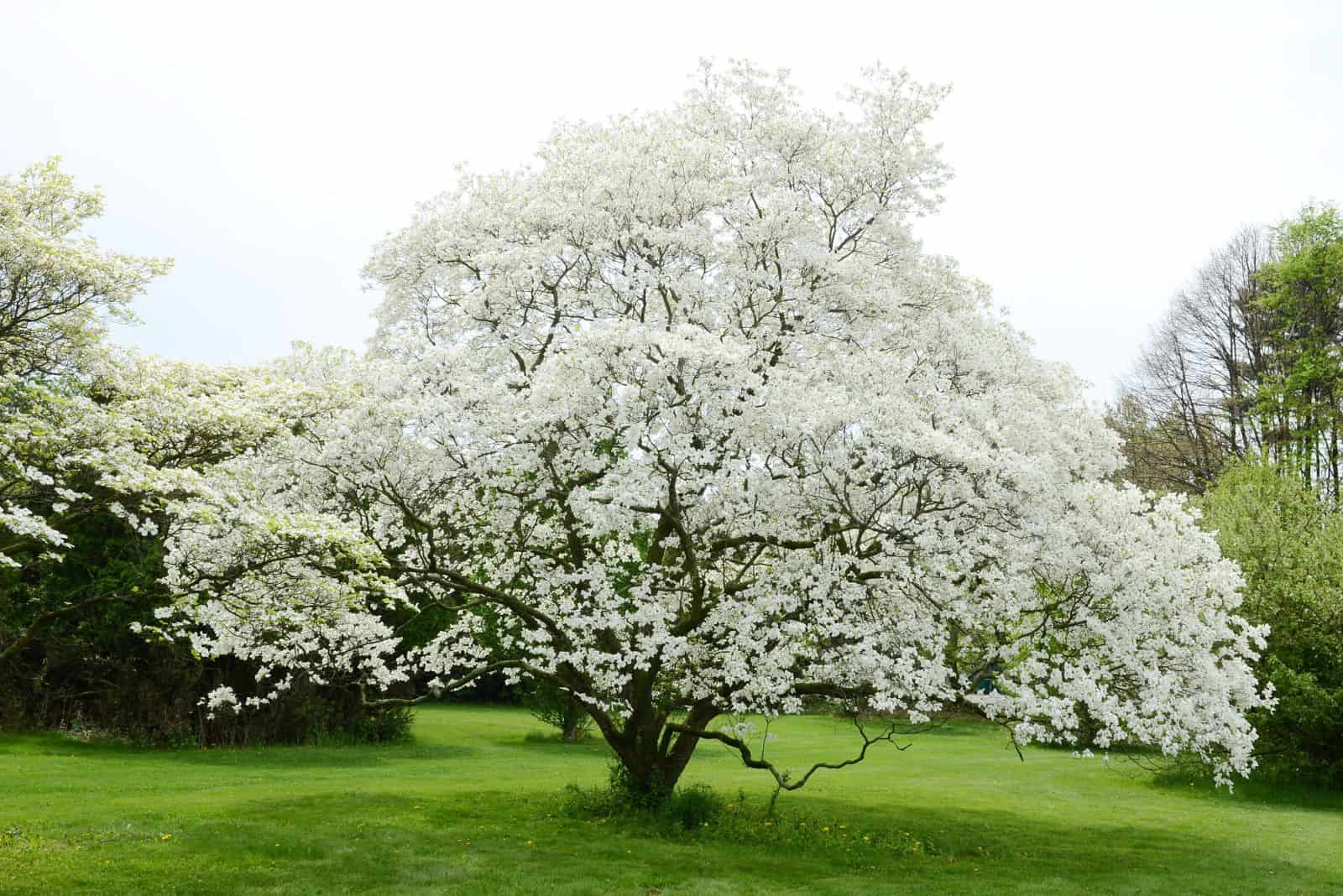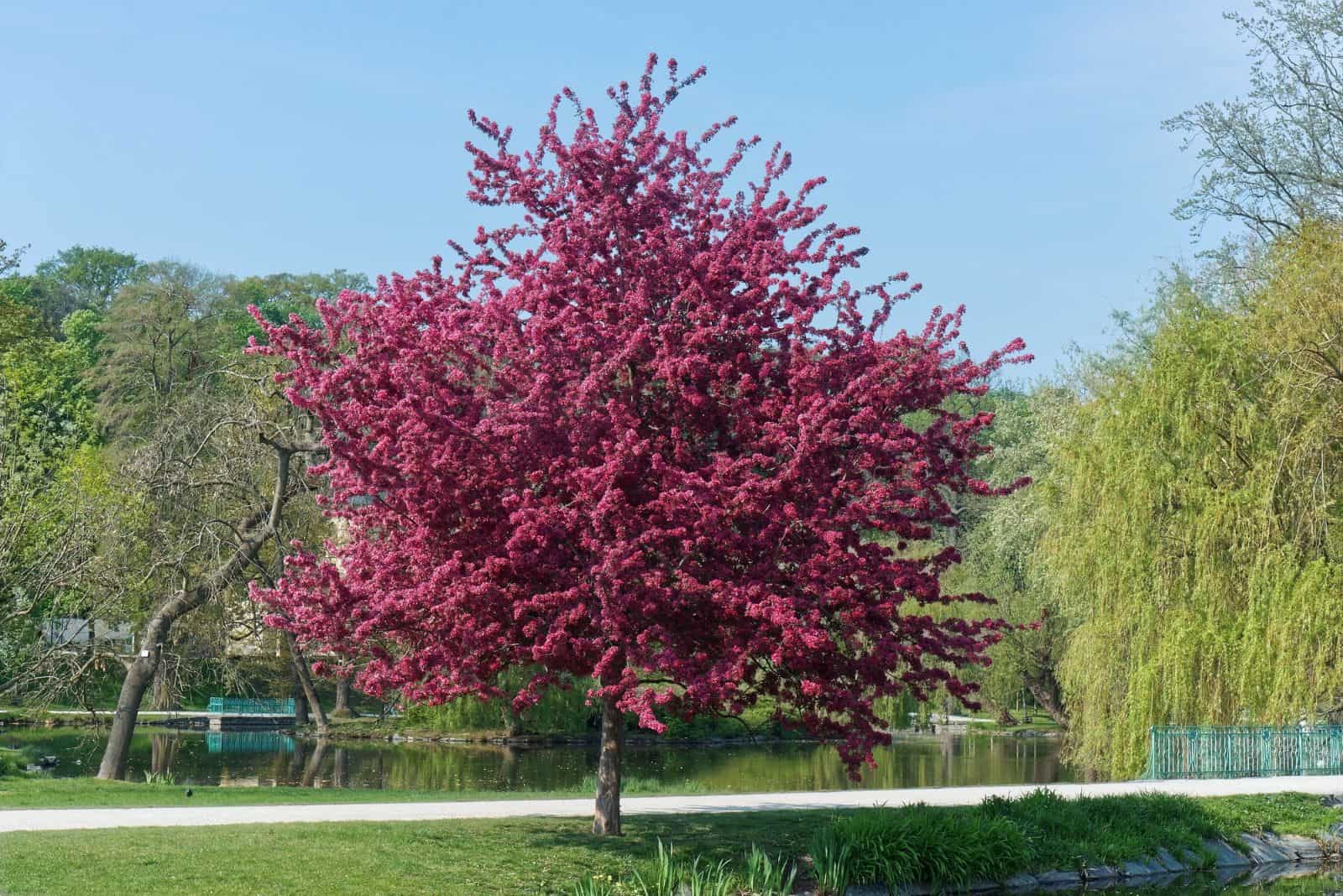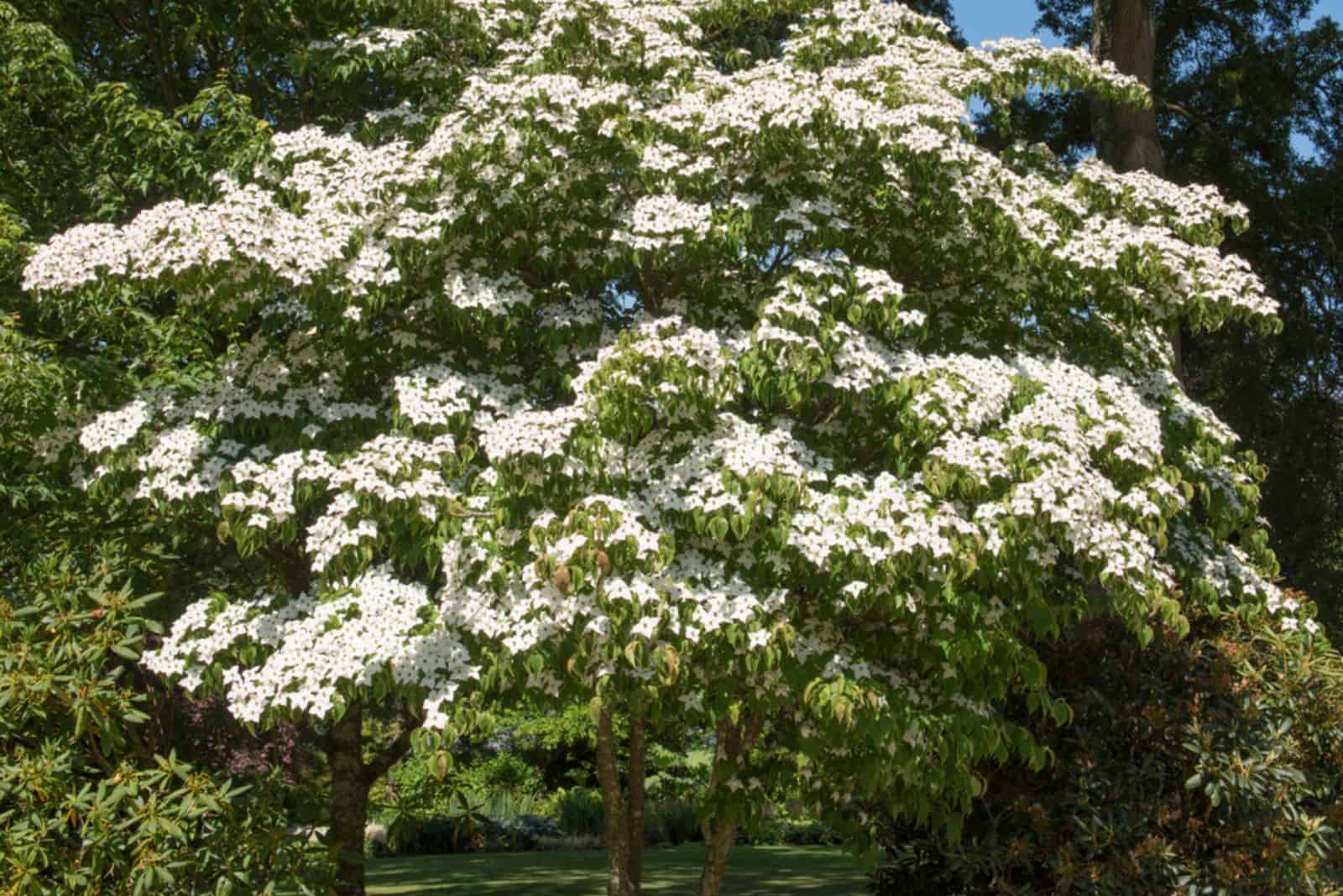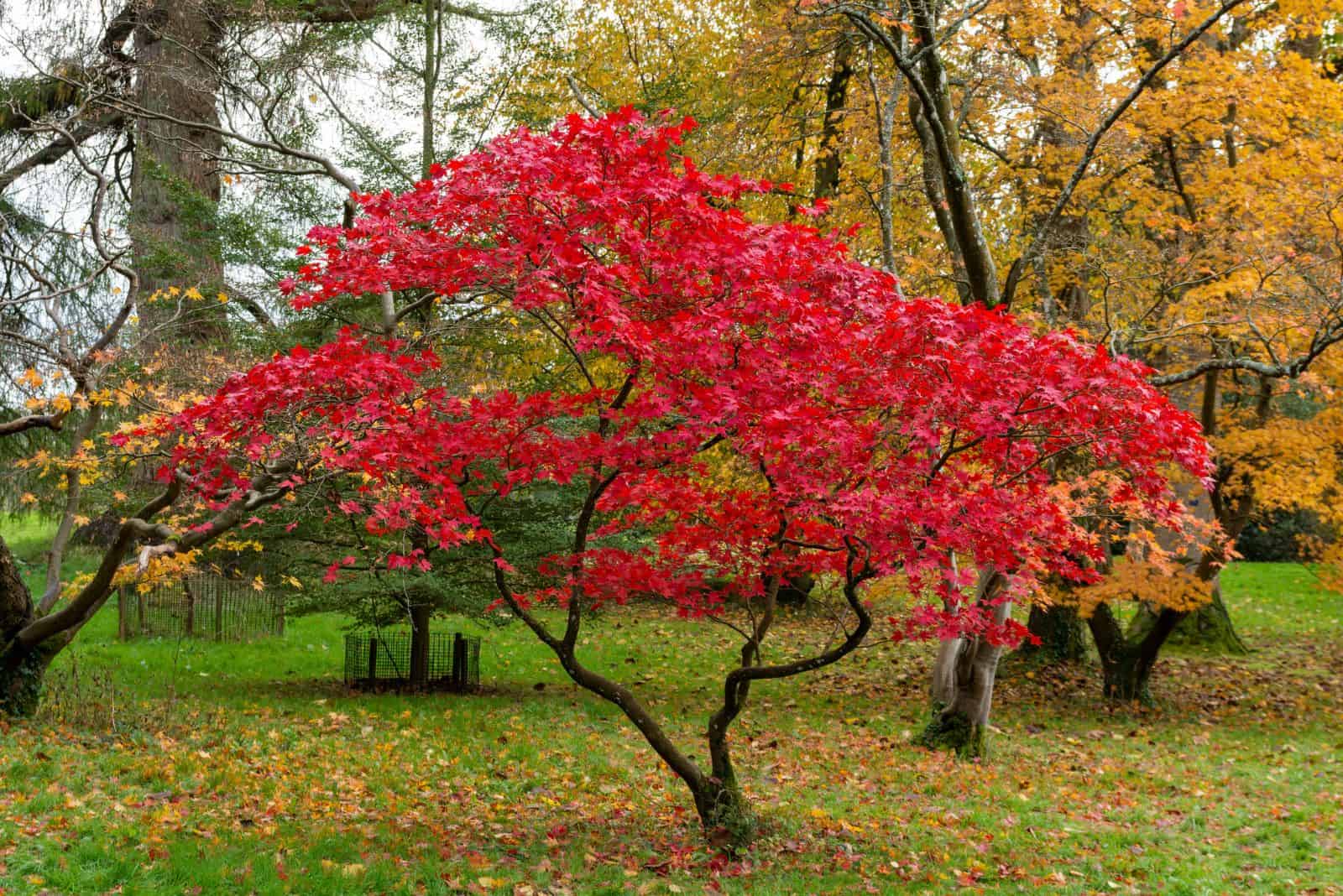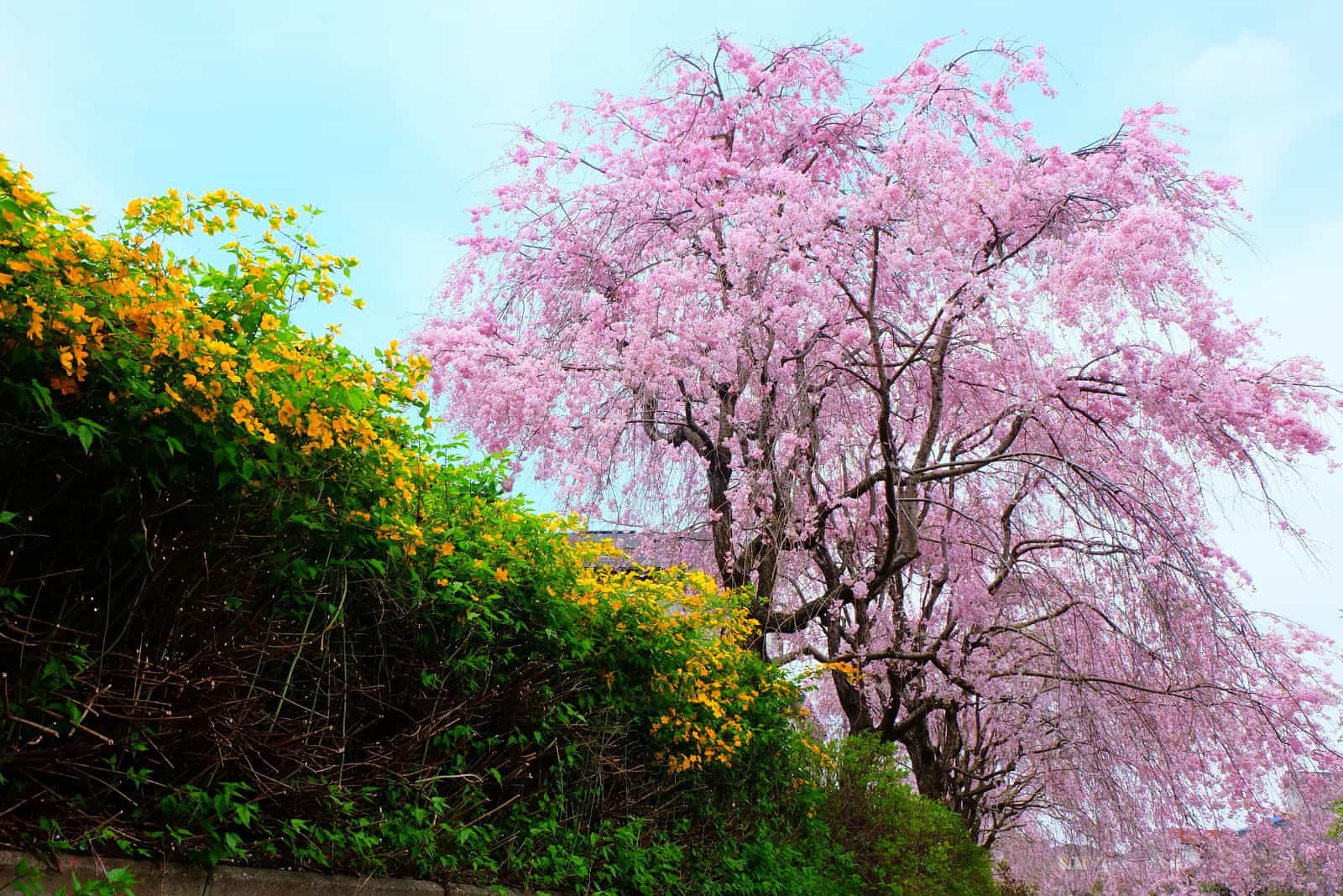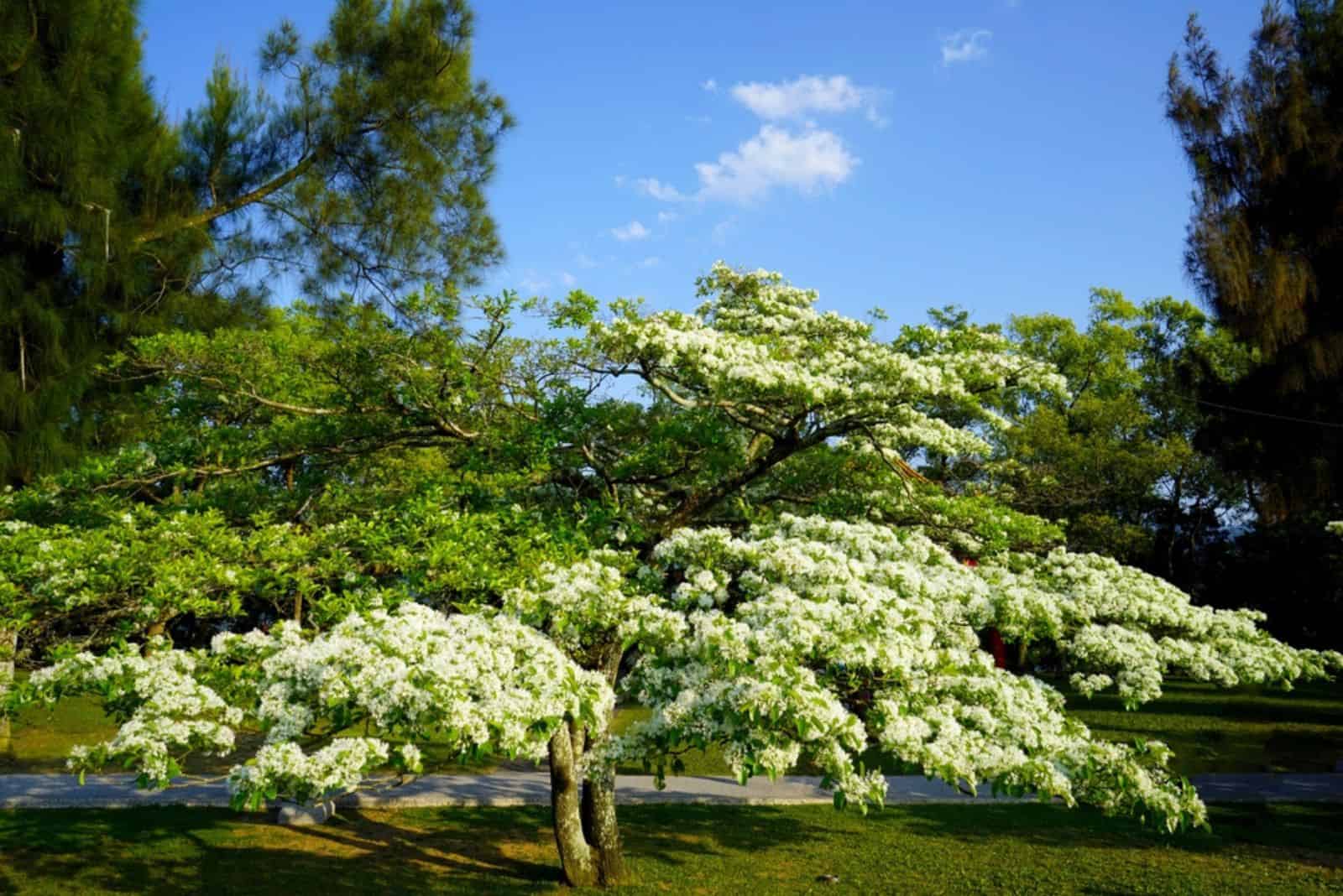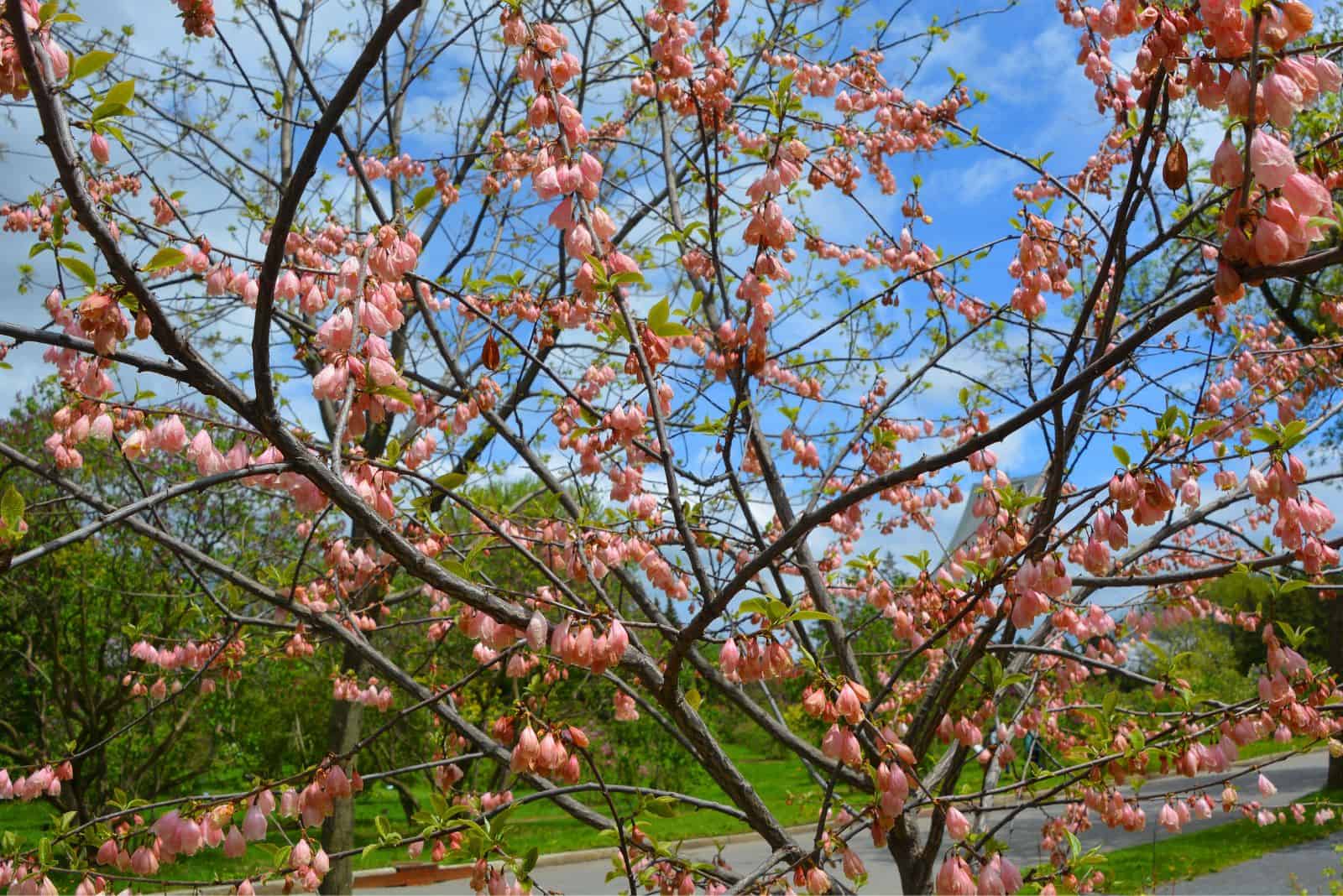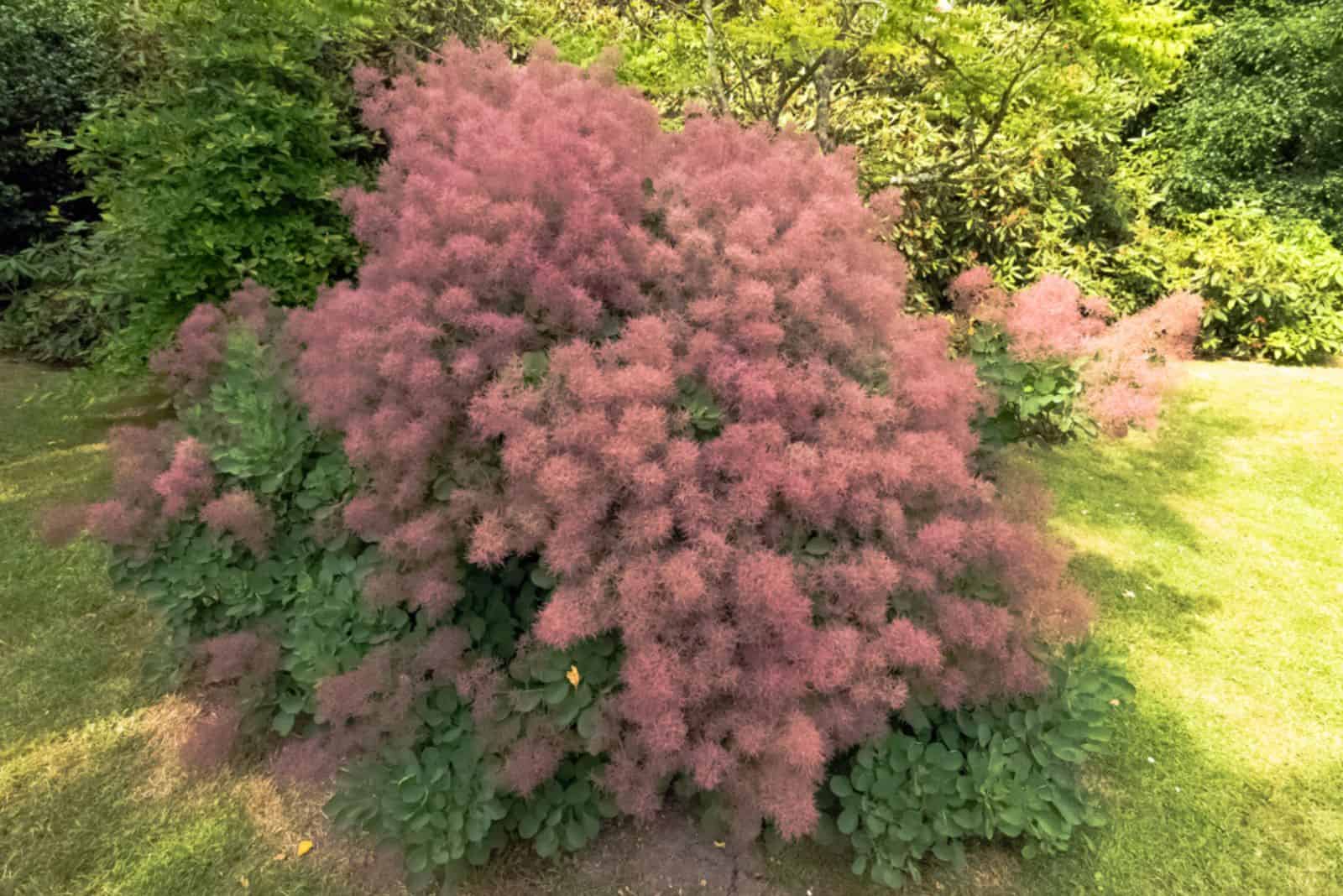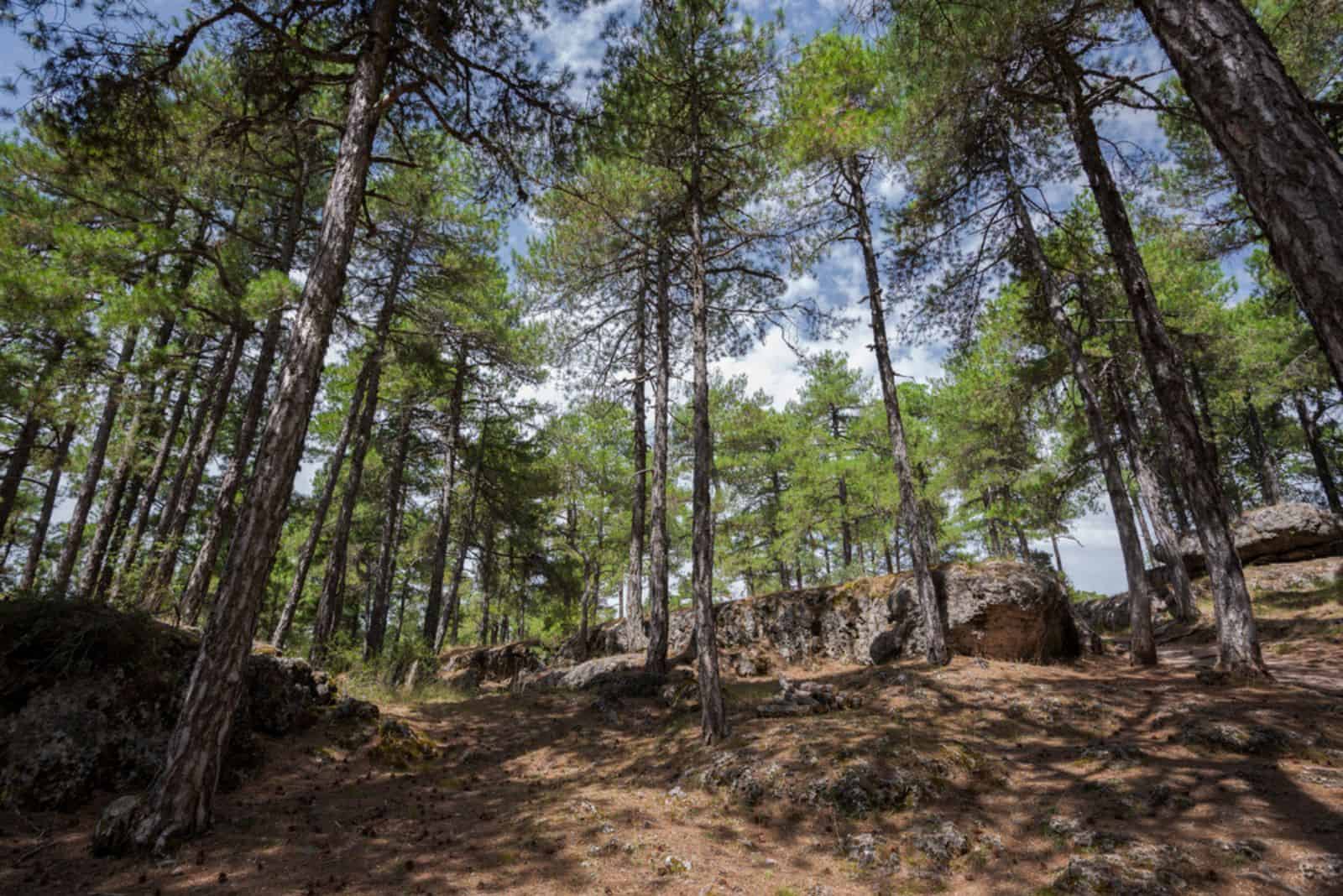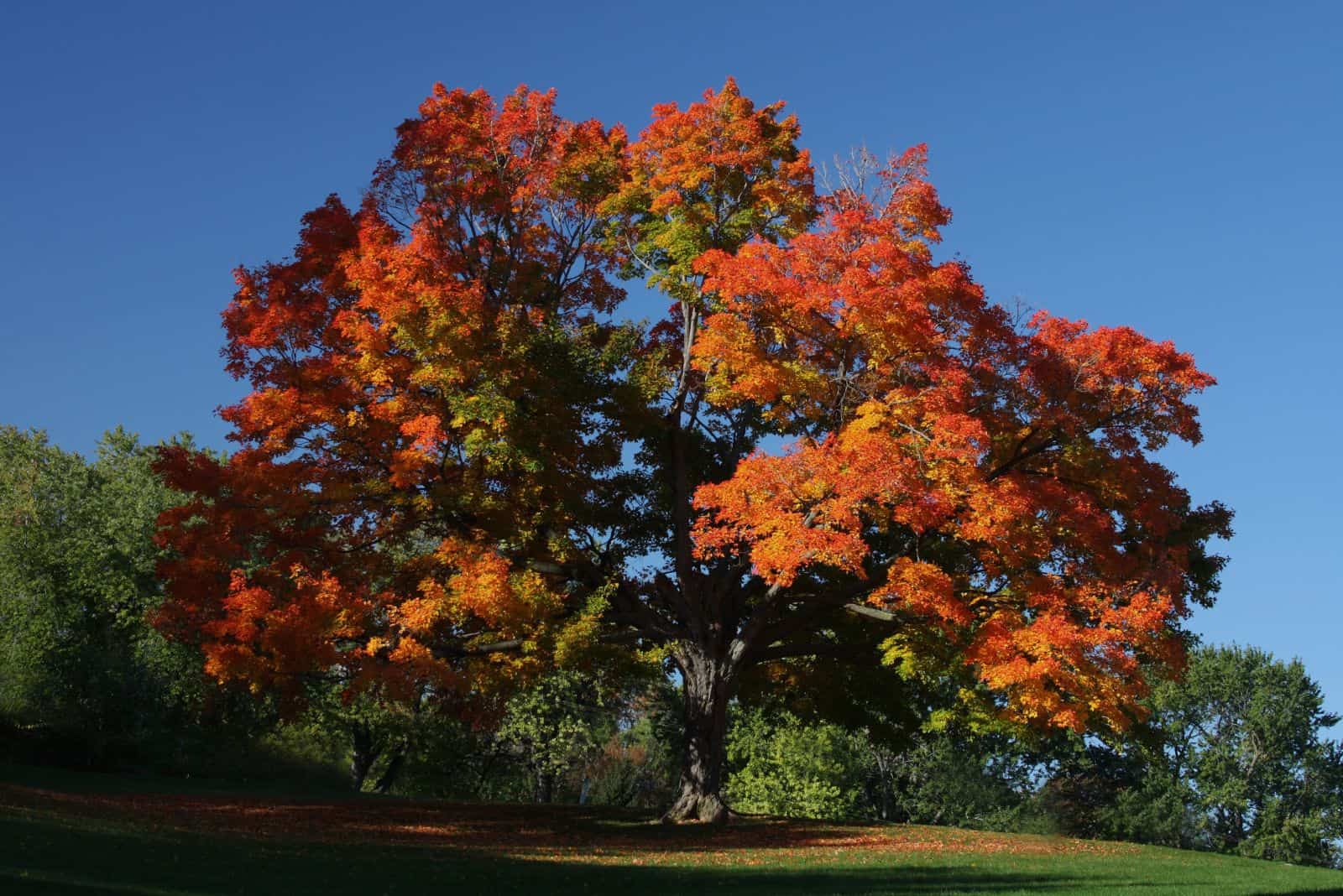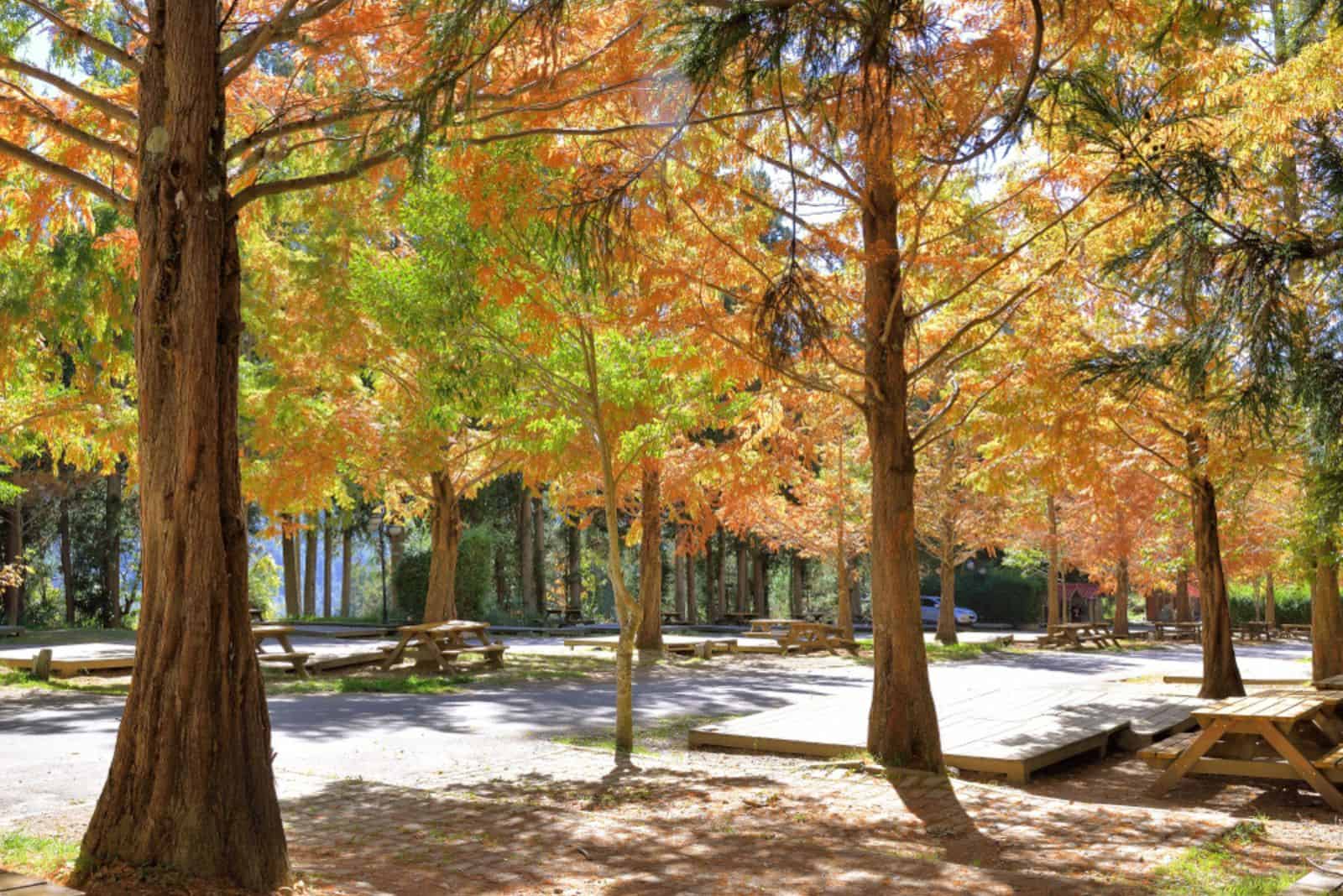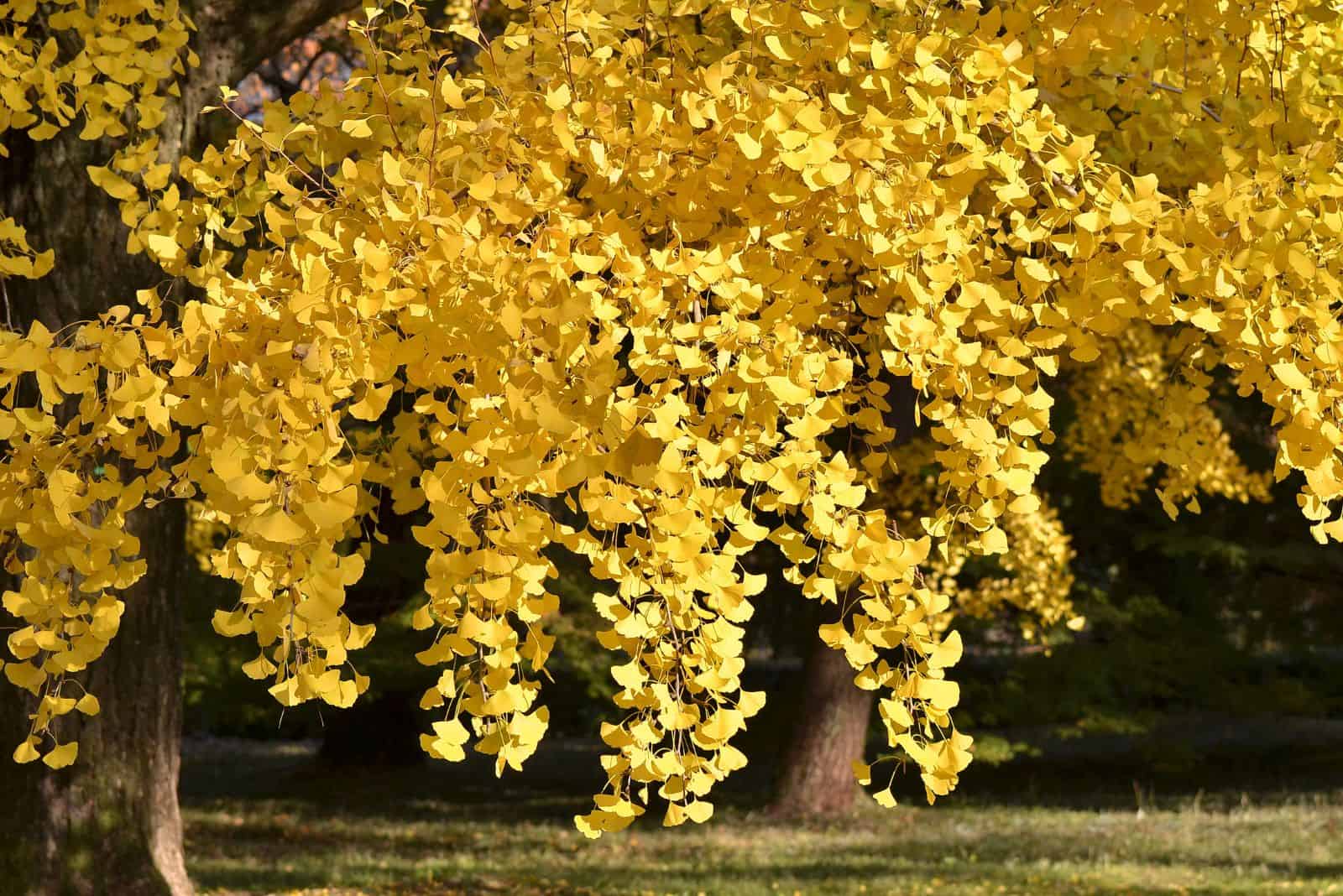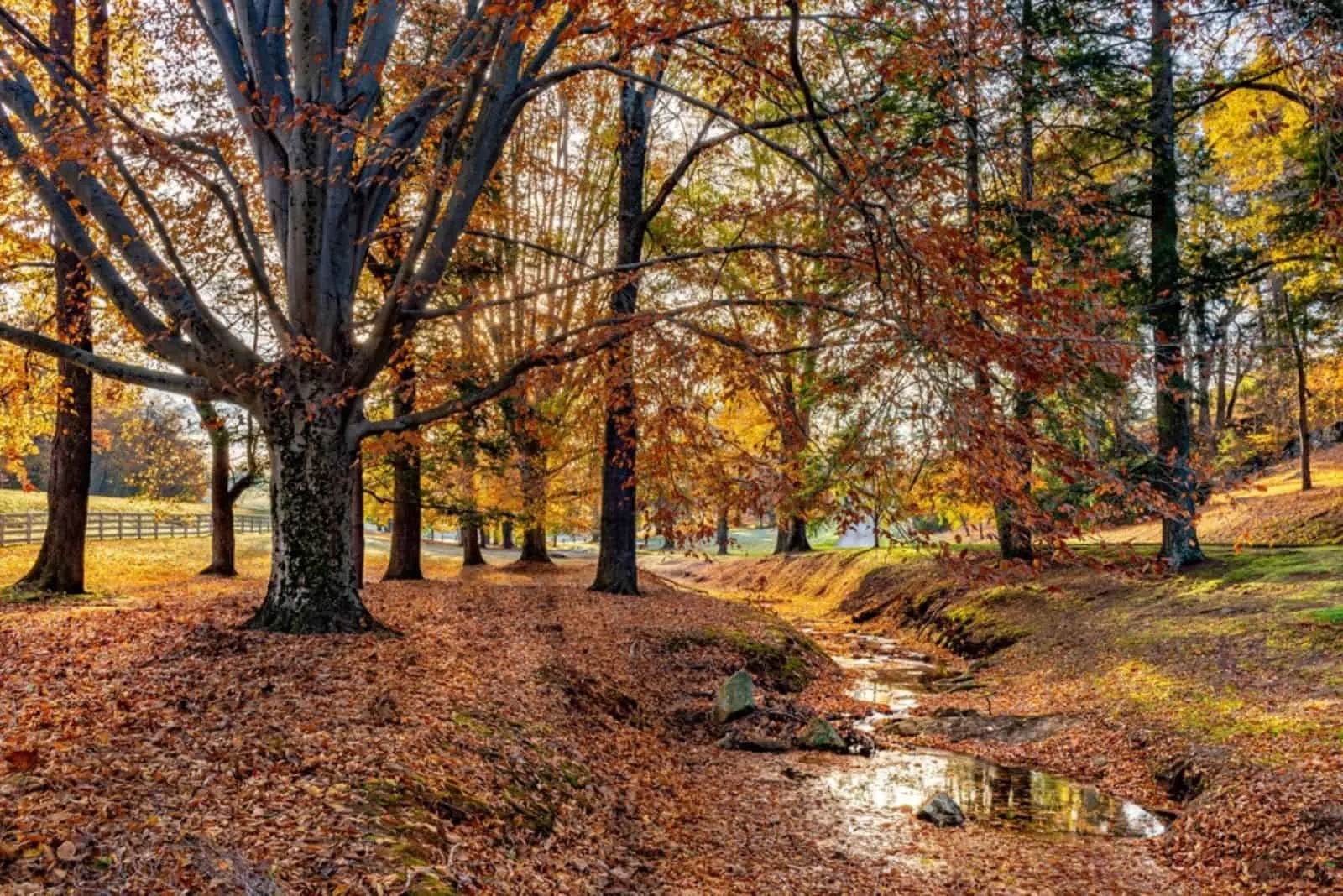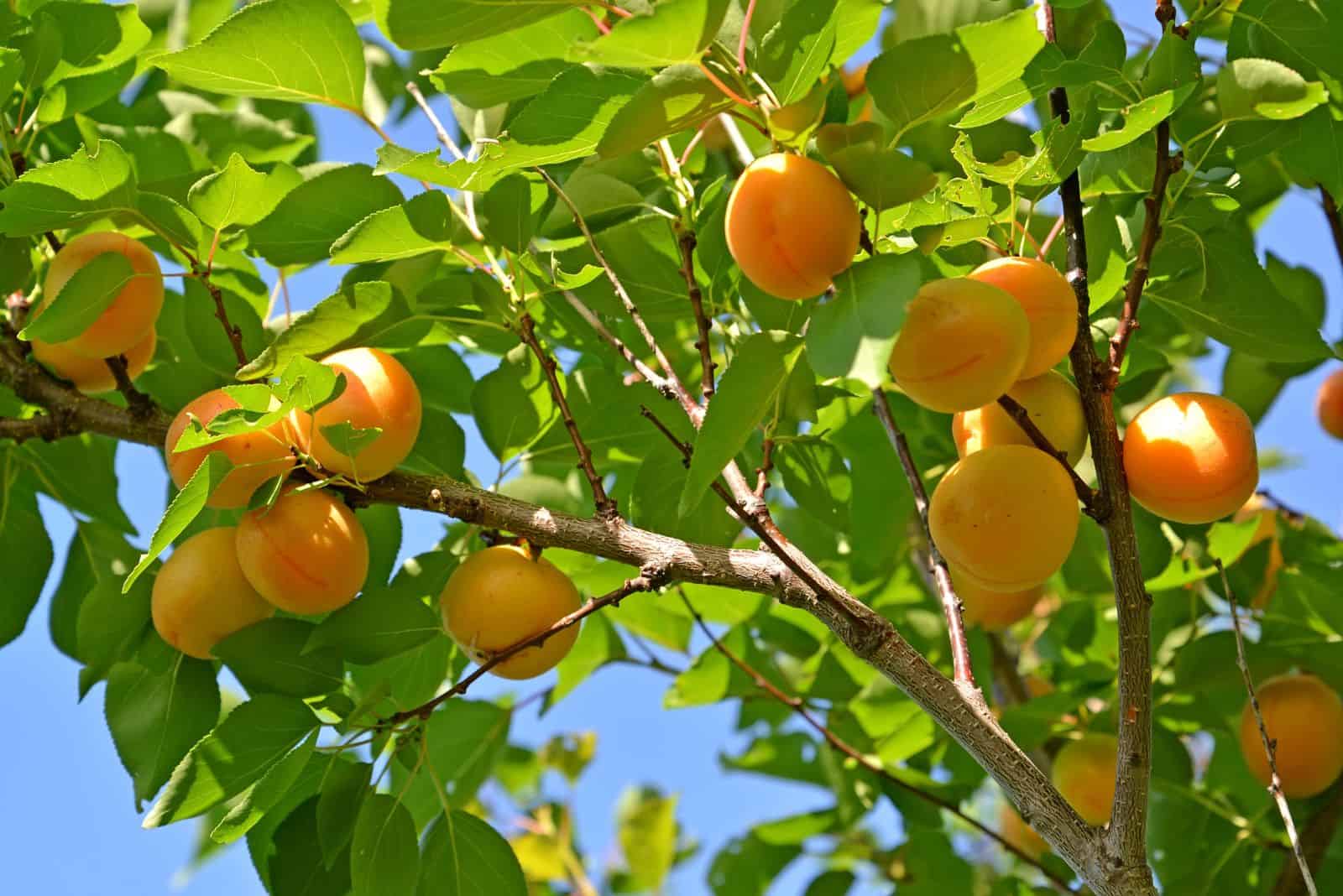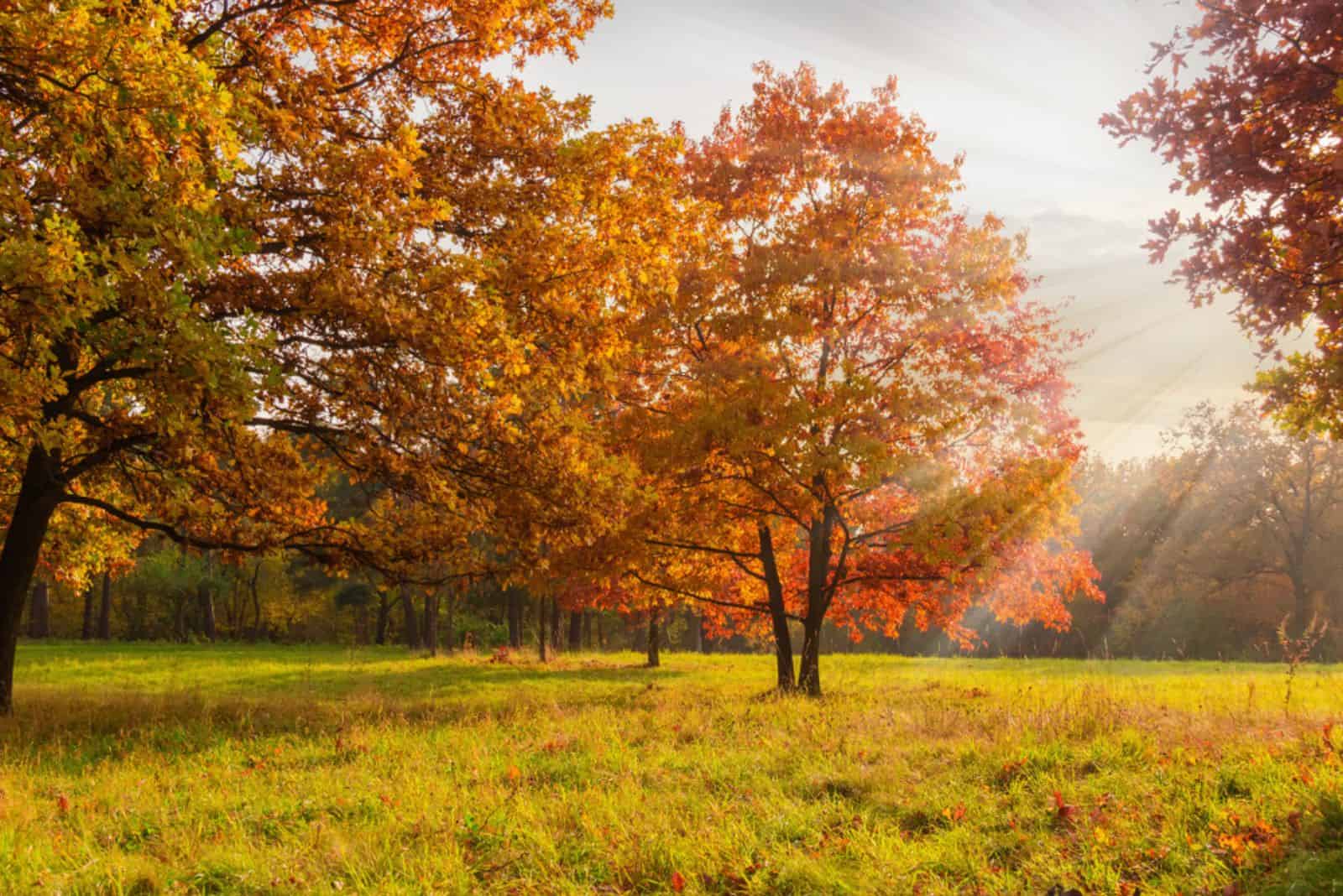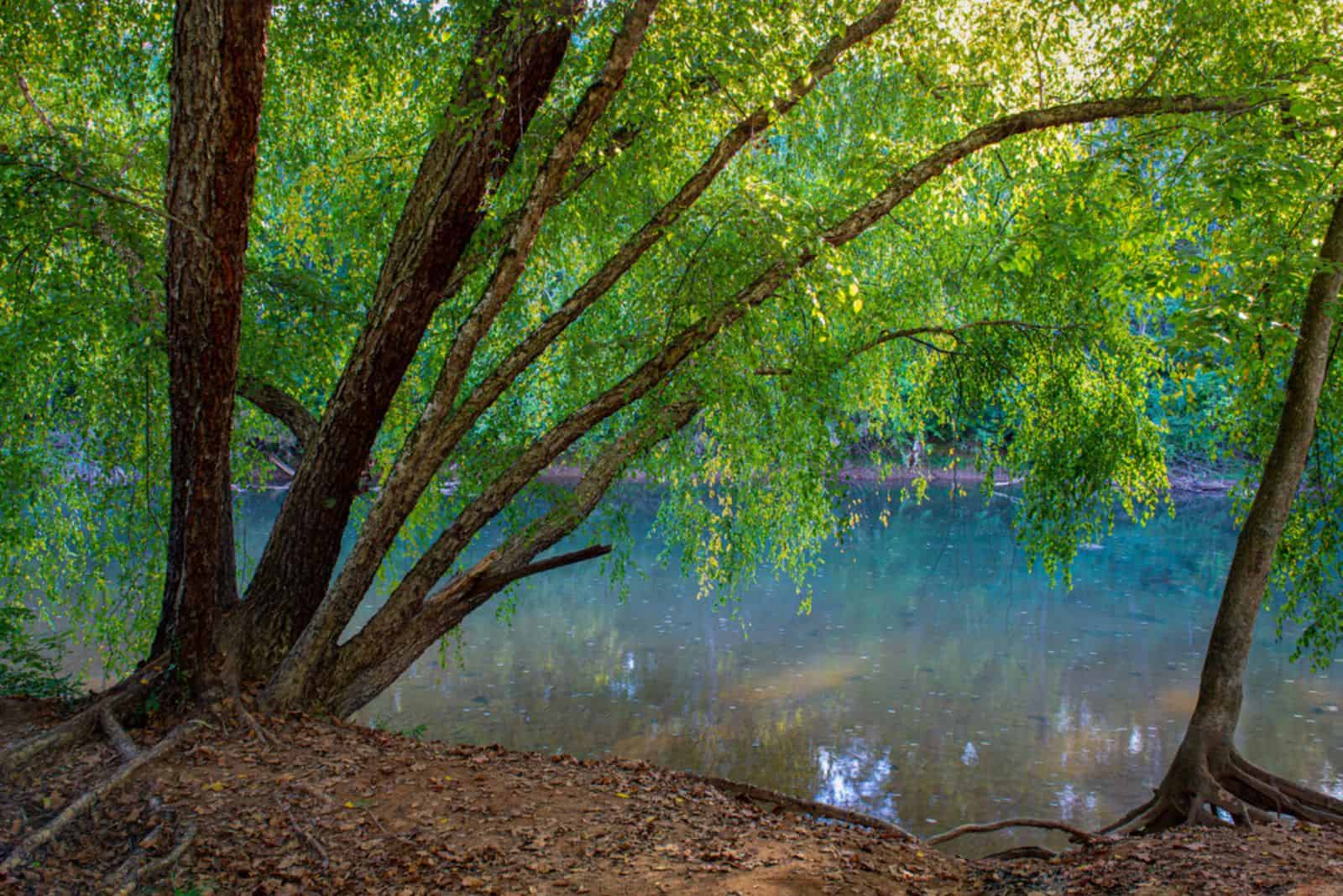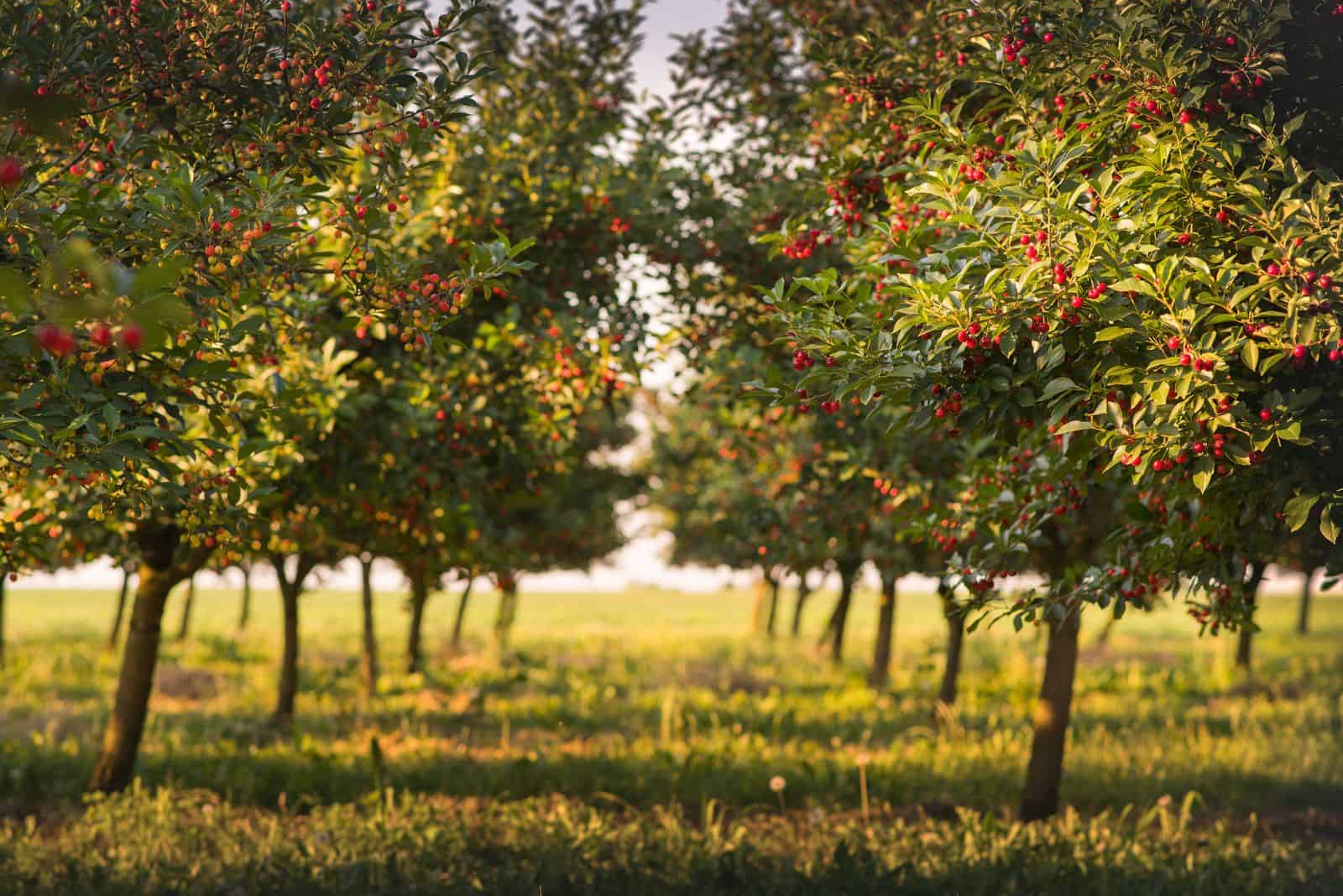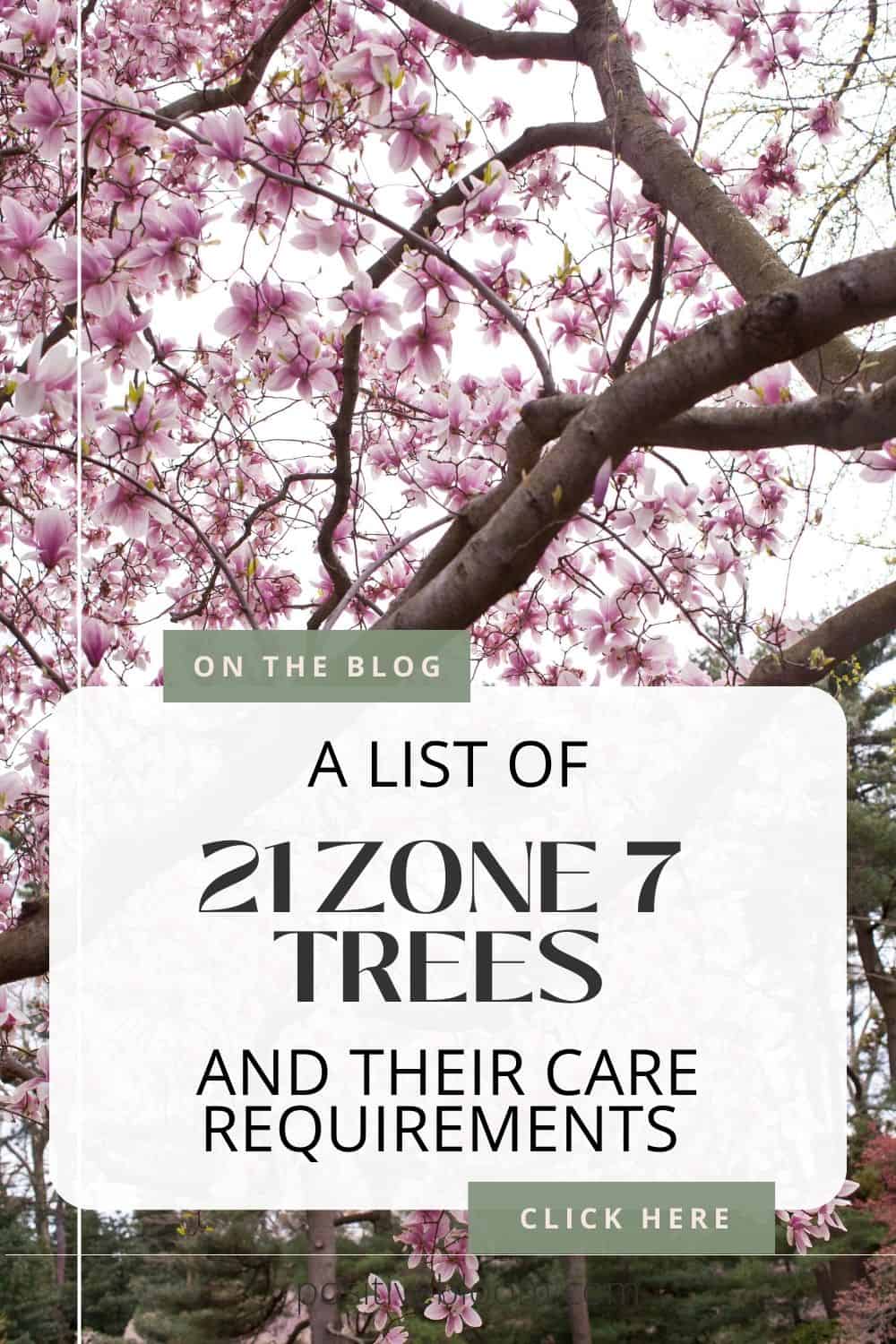When adding plants to our landscape, we must pay attention to certain things like the hardiness zones of the areas we live in, which actually determine the type of plant we should cultivate.
Luckily, zone 7 is suitable for the cultivation of many annuals and perennials. If you want to add a tree to your yard, I will show you 21 stunning zone 7 trees and their care requirements to help you decide which one.
Pay close attention to each tree’s care requirements, especially if you are a beginner gardener. Some trees need a lot of space to spread, and some grow vigorously, so everything must be considered before planting.
Fortunately, you can grow many low-maintenance specimens that come in lovely fall colors, and some even produce fruit.
Let’s get started!
A List Of 21 Zone 7 Trees
If you live in USDA zone 7, you can choose between many trees.
Some flowering trees suitable for this zone include Magnolias, Redbud, and Carolina silverbell trees.
River birch and Northern red oak are perfect for shadier spots, and Crape myrtle and Flowering quince can fit into any yard.
Let’s get into details!
1. Saucer Magnolia (Magnolia × soulangeana)
Let’s start with some basic info about the lovely Saucer magnolia.
[table id=582 /]
The Saucer Magnolia is a fascinating tree that produces enormous early spring blossoms, followed by fascinating deep green foliage.
Magnolias are one of the easiest trees to grow in your yard.
After the foliage appears, this tree keeps producing blossoms for a week or two.
Although these trees are kinda messy, the cleanup process doesn’t take very long because of their short flowering season.
This is a perfect zone 7 tree and will thrive if exposed to full sun.
2. Crape Myrtle (Lagerstroemia indica)
Let’s start with some basic info about the Crape myrtle tree.
[table id=583 /]
The Crape myrtle tree is renowned for its bright fall leaves, stunning summer blooms, and appealing exfoliating bark.
If you live in USDA plant hardiness zones 6-10, this tree will flourish and your garden will look breathtaking.
These trees are quite tolerant of heat and like being in the sun. They need at least six hours of direct sunshine every day where they are planted.
While some partial shade during the daytime is OK, it could lead to fewer flowers. More sunlight leads to more blossoms. Even though they aren’t fussy about soil conditions, they appreciate good drainage.
3. Redbud (Cercis canadensis)
Let’s start with some basic info about the Redbud tree.
[table id=584 /]
Redbud trees have their pros and cons, but one thing is certain – they are excellent zone 7 trees!
Despite the fact that these trees thrive in mild shade, direct sunshine promotes blossoming and improves flower yield.
Giving your redbud tree lots of direct light will increase its bloom production and attract more pollinators.
Pollinators are also enamored with the blossoms, and will frequently visit our gardens if we cultivate these trees.
Another excellent feature of this low-maintenance tree is its tolerance to drought. This is beneficial for gardeners who live in arid climates (e.g., Arizona) or frequently face water shortages.
4. White Dogwood (Cornus florida)
Let’s start with some basic info about the White dogwood tree.
[table id=585 /]
Cornus florida is a deciduous flowering tree perfect for USDA zones 5-9. It has a lovely, rounded, umbrella-like growth form, and white flowers.
The flowering season of the White dogwood starts in early April and ends in early May. The blossoms are replaced by gleaming green foliage in the summer.
Although it can tolerate full sun and wet conditions, this plant thrives in moderate shade and free-draining soil types.
5. Crabapple (Malus spp)
Let’s start with some basic info about the Crabapple.
[table id=586 /]
This is one of the best trees to choose if you’re searching for a compact, adaptable tree species that offers interest almost all year long.
It’s one of the prettiest trees with purple flowers. Additionally, hummingbirds love this tree, so it’ll be very beneficial for your garden.
Stunning buds and flowers adorn the tree in spring, unique foliage through summer and fall, and abundant fruit in winter.
These trees are also available in a variety of shapes and sizes, so they can fit almost any yard.
Malus plants like regions with chilly winters and mild summers since they do best in full light, but dislike heat.
Plant your Crabapple in an area with excellent air circulation to prevent leaf diseases.
6. Kousa Dogwood (Cornus kousa)
Let’s start with some basic info about the Kousa dogwood tree.
[table id=587 /]
The Kousa is an exceptional Dogwood tree species often grown as an ornamental tree. It provides a magnificent array of star-like flowers in the spring. The interesting layering of the branches offers shade and beauty in the summer.
The Kousa produces a stunningly vivid red hue in the fall. This tree’s unique beauty extends into the winter thanks to its jigsaw-like bark.
The Cornus kousa thrives in loamy, well-draining soil and can grow well in both full sun and partial shade.
7. Japanese Maple (Acer palmatum)
Let’s start with some basic info about the Japanese maple tree.
[table id=588 /]
Acer palmatum may serve as an eye-catching centerpiece. It’s the ideal plant to highlight a huge pot, or can be developed into an outstanding bonsai.
Numerous leaf forms and hues, ranging from diverse tints of green to orange, crimson, purple, and variegated, are available on the hundreds of different types of Japanese maples.
This tree thrives in USDA growing zones 5-8. Find a spot in your yard with partial shade for your Japanese maple tree to flourish.
The Acer palmatum tree is also one of the best trees to plant near the house.
8. Weeping Cherry (Prunus pendula)
Let’s start with some basic info about the Weeping cherry.
[table id=589 /]
Prunus pendula plants make excellent display trees and are an attractive addition to your landscape.
The flowers of the Weeping cherry are pretty delicate, so you need to find a spot where strong winds can’t reach them.
The flowers aren’t big fans of frost, so if you live in colder climates, avoid planting the tree in low-lying areas.
Sunny areas and well-draining soil types will encourage flowering and decrease the risk of fungal infections.
9. Fringe Tree (Chionanthus spp)
Let’s start with some basic info about the Fringe tree.
[table id=590 /]
Even though Fringe trees may reach 30 feet tall, most specimens only grow up to 20 feet, making these trees suitable for almost every garden.
Due to its ability to adapt to various conditions, the Fringe tree is an excellent zone 7 tree.
It produces stunning white blossoms followed by blue or purple berries. Different bird species seem to enjoy the berries of Fringe trees.
Deep green foliage adorns the tree throughout the summer.
Care for fringe trees is really easy because the fruit and blossoms don’t create a mess that has to be cleaned up.
10. Carolina Silverbell (Halesia carolina)
Let’s start with some basic info about the Carolina silverbell.
[table id=591 /]
The lovely Carolina silverbell is renowned for its low care requirements. It produces stunning, bell-shaped blossoms and deep green, oval-shaped foliage.
This tree combines perfectly with Encore Azaleas planted around the base. Imagine, Azaleas as a groundcover and Carolina silverbells as border trees!
Even though this tree looks pretty delicate, it’s a very hardy variety and grows perfectly in zone 7.
Honestly, I would skip starting the Carolina silverbell from seeds if I were you. They take too long to germinate, so buying young plants cultivated in containers is a better idea.
11. Smoke Bush (Cotinus coggygria)
Let’s start with some basic info about the Smoke bush.
[table id=592 /]
The Smoke bush is a magnificent ornamental tree suitable for any garden. This tree features several stems, purplish-pink plumes, and waxy green foliage. However, some varieties produce unique purple leaves.
The tree performs best when planted in early spring. Be careful with a Smoke bush as it’s considered toxic and its sap may cause skin irritation.
It makes a perfect zone 7 tree and, once established, doesn’t require additional watering.
12. Austrian Pine Tree (Pinus nigra)
Let’s see some basic info about the green giant Austrian pine tree.
[table id=593 /]
Austrian pine trees will make an attractive addition to your garden. However, this green giant requires a lot of space and may be challenging to cultivate in some regions.
It’s pretty susceptible to many diseases, so it would be best to contact local authorities and get more info on the growth of this tree in your region.
The main problem with this evergreen tree is that warmer temperatures increase its susceptibility to pests and diseases.
Therefore, anything above zone 7 won’t work for this specimen.
It requires full sun and a well-draining, fertile growing medium.
13. Sugar Maple (Acer saccharum)
Let’s start with some basic info about the Sugar maple.
[table id=594 /]
Meet another green giant, this time a favorite Canadian plant – the Sugar maple. This lovely perennial will take up a lot of space in your garden, but no other plant can compete with its beauty.
Its five-lobed leaves change their color as the growing season progresses. Green will turn to magnificent shades of orange, red, and yellow.
The tree thrives in full sun and requires watering until it’s well-established.
If you want to cultivate the tree for syrup, you need to wait for about 40 years!
14. Bald Cypress (Taxodium distichum)
Let’s start with some basic info about the Bald cypress.
[table id=595 /]
The Taxodium distichum is a deciduous tree that produces feathery needles and lovely bark. This tree has a long, long lifespan, so if you want to cultivate a plant for many future generations, the Bald cypress is an excellent choice.
The essential thing is to ensure all conditions for your Bald cypress so it can establish well.
Before planting the tree, you need to ‘inspect’ your garden well so that the grown-up tree doesn’t interfere with infrastructure.
Select a sunny spot in your garden and perform a pH test, as the tree enjoys acidic soil types.
15. Ginkgo (Ginkgo bilboa)
Let’s start with some basic info about the Ginkgo tree.
[table id=596 /]
One thing is for certain; your garden will look prettier than ever if you add a Ginkgo tree! But this is another green giant, so it needs a lot of space.
Yellow foliage will make you fall in love with the fall! I have to mention that experts suggest cultivating male trees only, as female trees smell pretty bad.
If you are looking for a shade tree, look no further than the Ginkgo tree.
It does grow really slowly, but it’s about 200 million years old, so it needs respect!
Let’s start with some basic info about American beech.
16. American Beech (Fagus grandifolia)
[table id=597 /]
The Fagus grandifolia is an impressive hardy tree with silky, grayish bark and deep green lustrous foliage.
The foliage has distinct veins that change to a copper hue in the fall and last through the winter months.
This tree does best in partial shade and requires well-draining, nutrient-rich soil.
Pests and diseases aren’t generally a problem, but a bark fungus infection may be lethal. Interestingly, the roots of the American beech tree don’t penetrate deep. This is the major reason it’s not advisable to grow grass near the base.
You’ll need to keep the soil moist as this Fagus specimen doesn’t tolerate drought well.
17. Apricot (Prunus armeniaca)
Let’s start with some basic info about the Apricot fruit tree.
[table id=598 /]
If you are looking for an ornamental tree that bears delicious fruit, then look no further than the Apricot tree.
The best thing about this plant is that its blooming season starts in late April. This means it will be the only flowering tree in your garden, as other plants are only starting to emerge and have not yet produced new leaves at this point.
This tree thrives in warmer climates, but you can search for one of the several cultivars that are resistant to freezing temperatures.
This Prunus plant has particular soil and water requirements, making it fairly demanding regarding maintenance, whether it is planted for decorative purposes or for its fruit. The advantages, though, are a lovely tree in your yard and, if you’re fortunate, fresh apricots!
These are relatively fast-growing trees, so if you’re an impatient person, the Apricot tree should be your choice.
18. Northern Red Oak (Quercus rubra)
Let’s start with some features of the unique Northern Red oak tree.
[table id=599 /]
The deep green foliage of the Northern red oak grows in an alternating pattern; the leaves turn to reddish-orange in the fall, making this tree truly unique.
The northern red oak is pretty adaptable and will thrive in various soil types, including loamy and rocky.
The Quercus rubra has high wildlife value, so it’s not only ornamental in gardens, but also beneficial. I’ve seen some gardeners plant Knock out roses near their Northern red oak trees, and I have to say that it looked breathtaking.
19. River Birch (Betula nigra)
Let’s start with some basic info about the River birch tree.
[table id=600 /]
For those landscapers looking for a fast-growing and low-maintenance tree, the River birch is a perfect choice.
River birch does well in permanently wet soils, whereas most tree specimens struggle to develop in such conditions.
However, the River birch tree is remarkably versatile and will also thrive in drier environments. I recommend planting your River birch in a sunny spot, as full sun will encourage the tree to bloom.
If you can’t ensure enough space for the River birch, go with its lovely cultivars, Shiloh Splash and Summer Cascade.
20. Chaste Tree (Vitex agnus-castus)
Let’s start with some basic info about the Chaste tree.
[table id=601 /]
The eye-catching Chaste tree produces purple blossoms all summer long. The leaf shape shares a resemblance with Cannabis plants.
I recommend planting your Chaste tree in late spring. The tree will go dormant in winter, so you should encourage root development.
I have to mention that this specimen can be pretty challenging to cultivate. This is a vigorous grower; if you don’t prune it on time, your yard can be invaded quickly.
Here’s one excellent idea for your landscape; plant a Chaste tree and combine it with Hydrangeas or Rose of Sharon shrubs.
You can also add some annuals suitable for cultivation in zone 7.
21. Sweet Cherry Tree (Prunus avium)
Let’s first see some basic info about the Sweet cherry tree.
[table id=602 /]
Many refer to this tree as wild cherry, but the cherries we harvest are actually from cultivars.
Fruits from the wild specimen are tiny and have a bitter flavor. The Prunus avium makes a lovely ornamental tree, so don’t worry if it doesn’t produce fruits; the blossoms are just as beautiful.
If you live in the southern region of California or anywhere in Virginia, the Sweet cherry tree is an excellent choice.
Generally speaking, Prunus avium plants thrive in full sun. Still, if the spot where you plan to grow the plant receives intense sun rays, it’s better to go with a shadier area.
Wrapping Up
If you were looking for a tree to grow in USDA hardiness zone 7, I’m sure you now know which one to grow. Luckily, some specimens don’t grow too tall and won’t interfere with infrastructure.
All species from this list have four-season interests, so your garden will look amazing all year long.
Of course, some trees may be challenging to cultivate, but I’m sure the one you choose will be happy and healthy for many years to come.
Until next time!
Like this post? Share or pin it for later!

